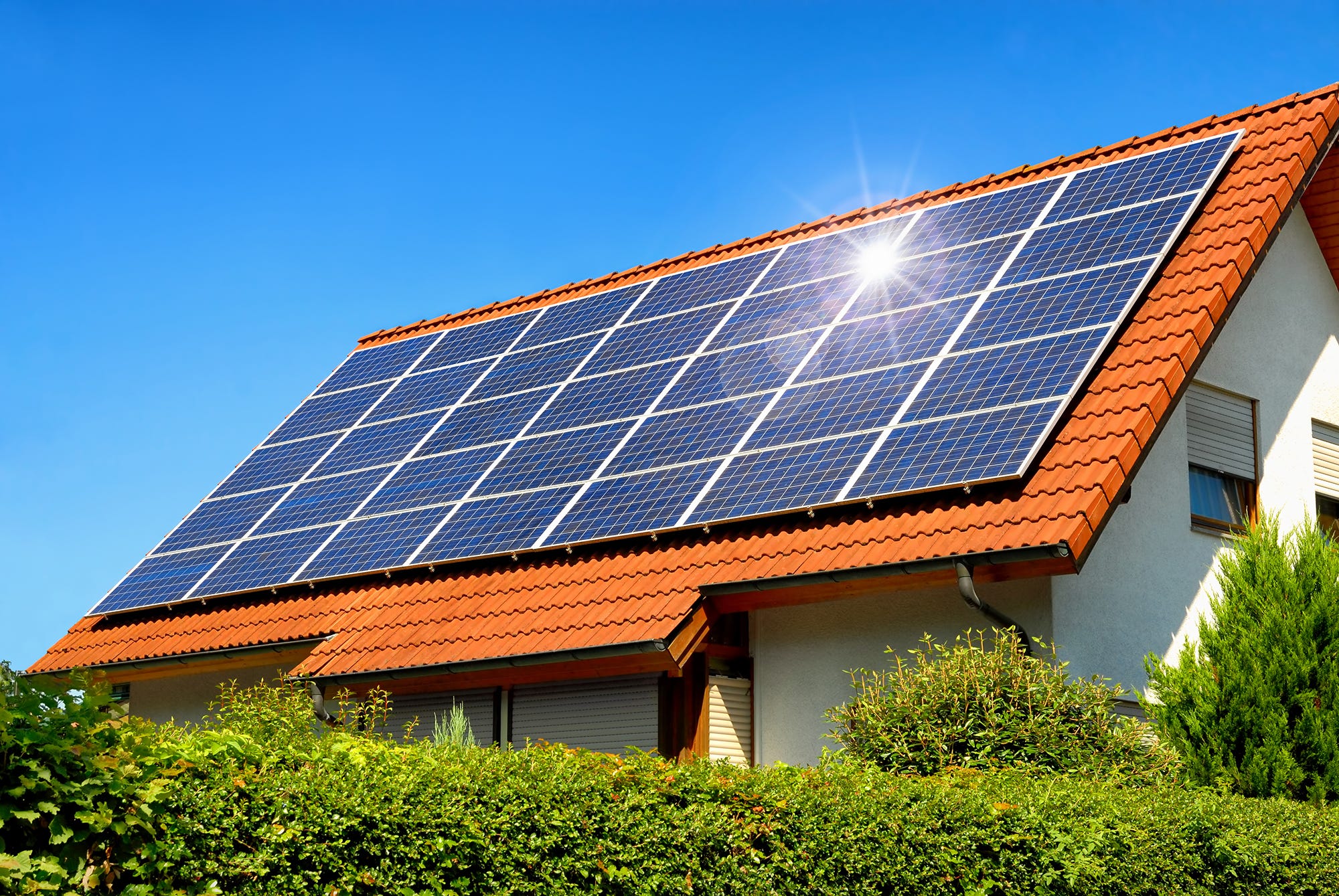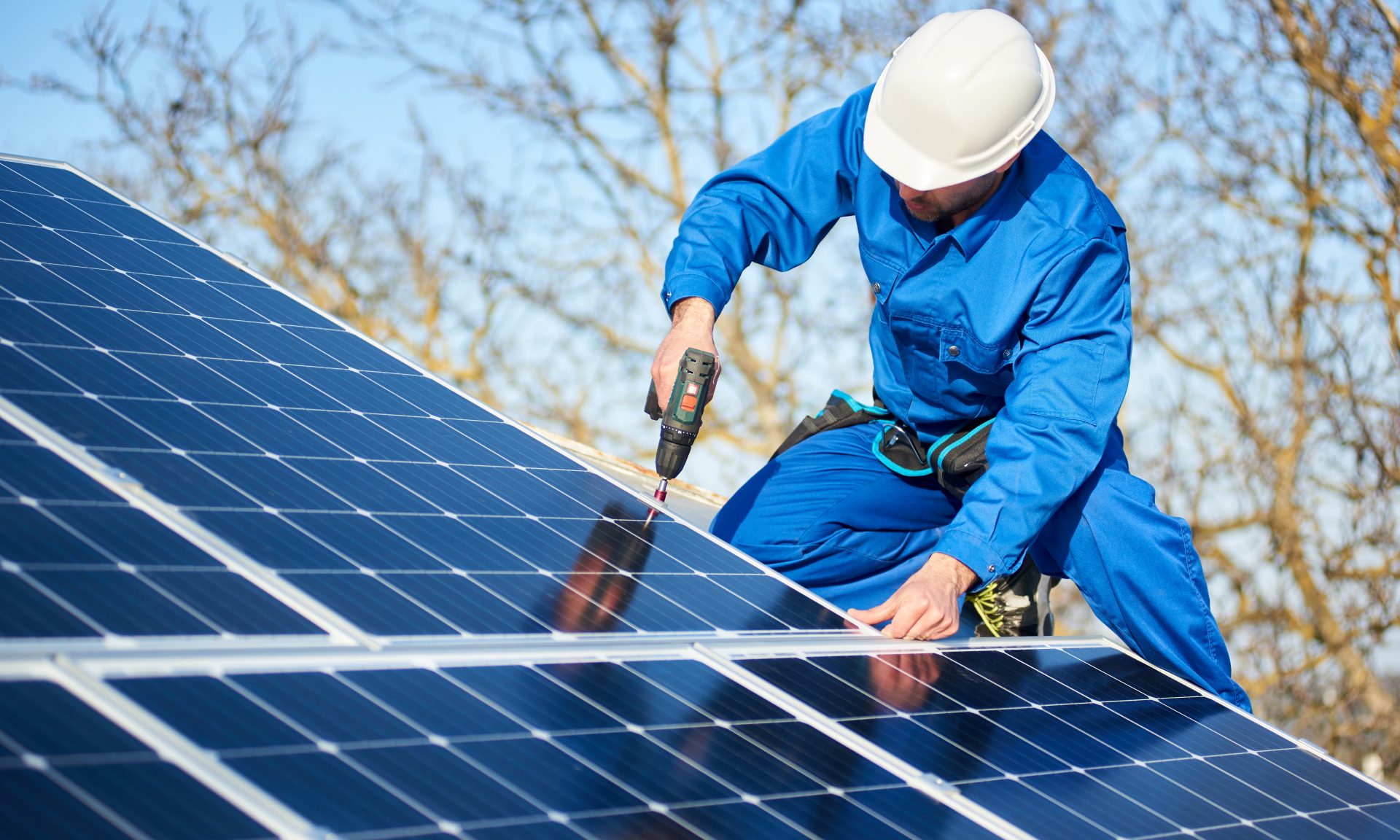How To Get Solar Energy For My House? | Can you power a house using solar energy only
How does solar energy work?
The process of turning sunlight into electricity is surprisingly simple. The process starts by capturing the sun’s energy as light, which breaks electrons free from their atoms, knocking them apart. This creates a flow of electrons that can be harnessed to create electrical power.
Solar energy is generally a renewable resource, which means it’s constantly regenerating. That means we’ll always have an inexhaustible supply to meet our needs. And the amount of solar energy available in the world is growing exponentially, so our supply will always be able to meet demand.
Solar power can be used for anything that requires electricity—from powering devices and homes to heating water and even lighting buildings. It’s a clean, sustainable form of energy that helps reduce our reliance on fossil fuels and reduces greenhouse gas emissions.

How do I get solar energy for my house?
When you’re looking into solar energy, it’s important to consider a few factors like your climate and the local area. That way, you can be sure that you’re getting quotes for systems that will work well in your specific environment.
Another thing to keep in mind is that the amount of energy you’ll get from your solar panels is directly related to how much sun there is in your area, not just the size or shading of the panels themselves. So even if you have a small house with limited roof space, you may still be able to produce enough energy if you live in an area with lots of sunshine!
Buying a solar energy system
An efficient and environmentally friendly way of generating electricity from the sun is to use solar energy panels. Solar energy systems can be purchased in different states, depending on your needs like how much power you want to generate and how much money you want to spend.
Incentives & benefits
There are many incentives and benefits to installing a solar energy system. For example, you may be eligible for a 26% federal tax credit. You may also receive net metering benefits from having your solar system. Net metering is the process of exchanging excess electricity produced by your solar energy system with the utility company. The utility company then credits your account for the electricity you produce.
Review bids
When you’re considering buying a solar energy system, it’s important to review all of the bids you receive. This includes reading through the fine print to understand what you’re actually getting.

Some things you should look for in a solar energy system include:
- The guarantee of production- how much power the system will produce each day.
- Who is responsible for maintaining the system- buyer or seller?
- What kind of maintenance is required and how often?
- What brand and size of panels are being installed?
- What type of inverter is being used (central or string)?
- How much does the monthly fee cost after installation fees are paid?
- Are there any tax incentives associated with this purchase?
You can use the Department of Energy’s calculator to estimate how much energy a specific solar system will produce in your area. Keep in mind that utility rates may go up, so overestimating could be costly down the road. Solar panels are expensive, so make sure you know what minimum power they’ll produce before making a purchase decision. And finally, be aware that most warranties and repairs last around 10 years; find out how long they cover beforehand!
The company
When looking for a solar energy system, it is important to do your research and ask around. Ask for references from friends, family and neighbors. Check the company’s history with state and local consumer protection agencies and state contractors licensing board. Search online to see what you find about a company’s reputation before buying anything from it.
Remember, a solar energy contract is a long term agreement – 20 years or more! Make sure you understand all the terms of the contract before signing on the dotted line. The leasing company will probably be responsible for system maintenance, but you should still read through the contract carefully.
Planning your home solar panel system
Once you’ve decided to go solar, you’ll need to figure out what kind of system will work best for your home.
Determine your solar potential
The first step to installing solar panels is determining your home’s solar potential. You’ll need to consider a few factors, such as:
- The amount of sun your home receives
- Whether you have a south-facing or west-facing roof
- If your roof is in good shape and has enough space for solar panels. If not, you may want to consider a ground-mounted system.
A slope between 30 and 45 degrees is acceptable for most homes, depending on where they are located . However, south-facing roofs with a slope between 15 and 40 degrees are ideal for harvesting the sun’s energy.
Compare your solar options: rooftop vs. community solar
If you’re considering solar for your home, you might be wondering if installing panels on your roof is the best option. You also have the option to subscribe to a community solar array – or to install a ground-mounted system.
Ground-mounted solar arrays are an easy way to own and install your own system without a roof. Community solar subscriptions allow members of a group or neighborhood to share their power from the sun.
Find out how many solar panels you will need
Now that you have a general idea of the size of solar panel system you will need, it is time to find out how many panels your home will require in order to cover 100 percent of your energy needs. The number of solar panels required for a specific home directly impacts the cost of solar energy.
It is important to take into account both your utility bills and the number of people in your household when making this calculation, as the average amount of energy used by a person varies depending on their habits.
Most homes require 20-24 solar panels in order to achieve complete energy independence; however, this can vary depending on factors like roof size, location and sun exposure.
What are the different types of solar power systems for homes?
There are three main types of solar power systems for homes: grid-tied, off-grid, and hybrid.
- Grid-tied systems are the most common type; they connect to the utility grid and use it as a backup system. If the utility grid goes down, the home solar system will stop working.
- Off-grid systems are more expensive than grid-tied systems and have batteries that store energy generated by the solar panels. The batteries allow homeowners to use electricity even when there is no sunlight.
- Hybrid systems have both a connection to the utility grid and batteries. They typically use less energy from the battery than off-grid systems, making them more affordable.
Each type of system has its own benefits and drawbacks. Homeowners should consider their needs carefully before deciding which type of system is best for them.
How much does it cost to install solar panels on my house?

The average cost of solar panel installation is around $17,538 to $23,458. Labor costs, operational costs and additional equipment make up the rest of the price. The price to install a high-priced Tier 1 solar system can be as much as $40,000 or more.
Solar panels require installation by a solar company and often come with warranties. The system costs of installing solar panels are affected by federal and state tax incentives, which will drop down to 22% in 2023. Commercial solar panel tax credits are supposed to be 10% until 2024.
What solar energy tax incentives are available for homeowners?
There are a few different solar energy tax incentives available for homeowners. Perhaps the most well-known incentive is the Solar Tax Credit, which offers a tax credit worth 26% of your total installation cost. This tax credit is available through the end of 2022–after that, it drops to 22% and expires completely by 2024.
In addition to the Solar Tax Credit, there are many other incentives available depending on where you live. For example, some states offer additional tax credits or rebates, while others have laws in place requiring utilities to purchase excess power generated from solar panels at a premium rate. There are also federal battery storage incentives which help offset the cost of installing a home battery system alongside your solar array.
Pros and cons of solar panels for your home
There are benefits and drawbacks of installing solar panels for your home. Solar panels can help the environment by reducing your carbon footprint, but they also have costs like installation which may be expensive and time-consuming. Net metering allows you to sell back excess energy from solar panels when the sun is shining brightly, and solar panels may be eligible for certain tax breaks, like the 26% Federal Tax Credit or Energy Investment Tax Credit (ITC).
Solar panels are not always able to generate power because of cloudy days and nightfall. Parts of solar installations need to be replaced every few years due to wear and tear on parts of the system, which costs money in time and money in repairs and maintenance fees.
Overall, solar panels offer many social benefits like helping the environment and lowering your carbon footprint, but there are some financial costs associated with them that should be considered before making a decision.
Frequently Asked Questions (FAQs)
Are solar panels worth it?
There is a lot of debate around whether or not solar panels are worth it. Some people believe that the investment in solar panels will pay off over time, while others think that the cost of solar energy is too high to be sustainable in the long run.
How many solar panels does the average house need?
The number of solar panels on an average house depends on the brand and model of the system chosen. However, a more relevant question to ask is “What size solar panel system do I need?”
In 2022, The average home in the U.S needs between 20 and 24 solar panels to cover its electric bills. There is a calculator to help you figure out what type of solar panel size you need for your home, and how much it will cost with all the included equipment.
Can I run my house using only solar energy?
You will likely need more solar panels in order to go off-grid. Most people think that they can just purchase a few solar panels and be good to go, but this is not the case. In order to generate enough electricity to power your entire home, you will likely need quite a few panels.
If you are interested in going off-grid, it is important to do your research first and figure out how many panels you will need. You can then start shopping for solar panel systems that will meet your needs.
